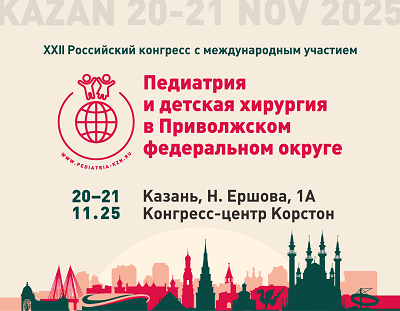Noonan syndrome combined with juvenile xanthogranuloma in a newborn
https://doi.org/10.21508/1027-4065-2025-70-1-64-69
Abstract
RASopathies represent one of the largest groups of genetic disorders. One of them is Noonan syndrome, an autosomal dominant disease, which in rare cases can also be inherited in an autosomal recessive manner caused by a disruptions of the RAS/MAPK signaling pathway. This pathology occurs in 1 in 1000–2500 live births and leads to a number of disorders: dysmorphic facial features, congenital heart defects, lymphatic malformations, hemostatic disorders, chest abnormalities, cryptorchidism, delayed neuropsychological and physical development. The development of Noonan syndrome is caused by mutations in the genes PTPN11 (in about 50% of patients), SOS1, RAF1, RIT1, KRAS, NRAS, BRAF, LZTR1, SOS2, etc. The phenotypic similarity of Noonan syndrome to other RASopathies, as well as chromosomal abnormalities, in particular with Turner syndrome, the presence of concomitant pathology of the neonatal period and skin formations leads to difficulties in differential diagnostic search and, as a result, in diagnosis. Awareness of neonatologists and pediatricians about the clinical picture of this syndrome, as well as possible concomitant pathologies, will contribute to its early diagnosis, proper management strategies and improvement of the patient’s quality of life. This article describes a rare clinical case of juvenile xanthogranuloma in a child with Noonan syndrome.
About the Authors
D. M. MushcherovaRussian Federation
Moscow
U. S. Severgina
Russian Federation
Moscow
A. P. Khokhlova
Russian Federation
Moscow
H. A. Sarkisyan
Russian Federation
Moscow
S. V. Cherkasova
Russian Federation
Moscow
E. I. Shabelnikova
Russian Federation
Moscow
P. V. Shumilov
Russian Federation
Moscow
References
1. Hebron K.E., Hernandez E.R., Yohe M.E. The RASopathies: from pathogenetics to therapeutics. Dis Model Mech 2022; 15(2): dmm049107. DOI: 10.1242/dmm.049107
2. Orlova A.A., Dadali E.L., Polyakov A.V. Clinical and genetic characteristics of Noonan syndrome and Noonan-like diseases. Genetics 2020; 56: 525–533. (in Russ.) DOI: 10.31857/s0016675820050112
3. Zenker M., Edouard T., Blair J.C., Cappa M. Noonan syndrome: improving recognition and diagnosis. Arch Dis Child 2022; 107(12): 1073–1078. DOI: 10.1136/archdischild-2021–322858
4. Palit A., Inamadar A.C. RASopathies: Dermatologists’ viewpoints. Indian J Dermatol Venereol Leprol 2022; 88(4): 452–463. DOI: 10.25259/IJDVL_799_20
5. Ali M.M., Gilliam A.E., Ruben B.S., Tidyman W.E., Rauen K.A. Juvenile xanthogranuloma in Noonan syndrome. Am J Med Genet A 2021; 185(10): 3048–3052. DOI: 10.1002/ajmg.a.62353
6. Patti G., Scaglione M., Maiorano N.G., Rosti G., Divizia M.T., Camia T., et al. Abnormalities of pubertal development and gonadal function in Noonan syndrome. Front Endocrinol (Lausanne) 2023; 14: 1213098. DOI: 10.3389/fendo.2023.1213098
7. Athota J.P., Bhat M., Nampoothiri S., Gowrishankar K., Narayanachar S.G., Puttamallesh V., et al. Molecular and clinical studies in 107 Noonan syndrome affected individuals with PTPN11 mutations. BMC Med Genet 2020; 21(1): 50. DOI: 10.1186/s12881–020–0986–5
8. Linglart L., Gelb B.D. Congenital heart defects in Noonan syndrome: Diagnosis, management, and treatment. Am J Med Genet C Semin Med Genet 2020; 184(1): 73–80. DOI: 10.1002/ajmg.c.31765
9. Saint-Laurent C., Mazeyrie L., Yart A., Edouard T. Novel therapeutic perspectives in Noonan syndrome and RASopathies. Eur J Pediatr 2024; 183(3): 1011–1019. DOI: 10.1007/s00431–023–05263-y
10. Tiemens D.K., van Haaften L., Leenders E., van Wegberg A.M.J., Gunther Moor B., Geelen J., et al. Feeding Problems in Patients with Noonan Syndrome: A Narrative Review. J Clin Med 2022; 11(3): 754. DOI: 10.3390/jcm11030754
11. Vahabi-Amlashi S., Hoseininezhad M., Tafazzoli Z. Juvenile Xanthogranuloma: Case Report and Literature Review. Int Med Case Rep J 2020; 13: 65–69. DOI: 10.2147/IMCRJ.S240115
12. Miraglia E., Laghi A., Moramarco A., Giustini S. Juvenile xanthogranuloma in neurofibromatosis type 1. Prevalence and possible correlation with lymphoproliferative diseases: experience of a single center and review of the literature. Clin Ter 2022; 173(4): 353–355. DOI: 10.7417/CT.2022.2445
13. Fraitag S., Boccara O. What to Look Out for in a Newborn with Multiple Papulonodular Skin Lesions at Birth. Dermatopathology (Basel) 2021; 8(3): 390–417. DOI: 10.3390/dermatopathology8030043
14. Hernández-San Martín M.J., Vargas-Mora P., Aranibar L. Juvenile Xanthogranuloma: An Entity With a Wide Clinical Spectrum. Actas Dermosifiliogr (Engl Ed) 2020; 111(9): 725–733. English, Spanish. DOI: 10.1016/j.ad.2020.07.004
15. Chen C.P. Prenatal Diagnosis of Euploid Increased Nuchal Translucency on Fetal Ultrasound (I): Noonan Syndrome: Prenatal Diagnosis and Genetic Testing. J Med Ultrasound 2022; 30(4): 257–260. DOI: 10.4103/jmu.jmu_78_22
16. Dahlgren J., Noordam C. Growth, Endocrine Features, and Growth Hormone Treatment in Noonan Syndrome. J Clin Med 2022; 11(7): 2034. DOI: 10.3390/jcm11072034
17. Ney G., Gross A., Livinski A., Kratz C.P., Stewart D.R. Cancer incidence and surveillance strategies in individuals with RASopathies. Am J Med Genet C Semin Med Genet 2022; 190(4): 530–540. DOI: 10.1002/ajmg.c.32018
18. Bátai B., Krizsán S., Gángó A., Hegyi L., Csóka M., Erdélyi D.J., et al. Juvenile myelomonocytic leukaemia presentation after preceding juvenile xanthogranuloma harbouring an identical somatic PTPN11 mutation. Pediatr Blood Cancer 2020; 67(9): e28368. DOI: 10.1002/pbc.28368
Review
For citations:
Mushcherova D.M., Severgina U.S., Khokhlova A.P., Sarkisyan H.A., Cherkasova S.V., Shabelnikova E.I., Shumilov P.V. Noonan syndrome combined with juvenile xanthogranuloma in a newborn. Rossiyskiy Vestnik Perinatologii i Pediatrii (Russian Bulletin of Perinatology and Pediatrics). 2025;70(1):64-69. (In Russ.) https://doi.org/10.21508/1027-4065-2025-70-1-64-69










































